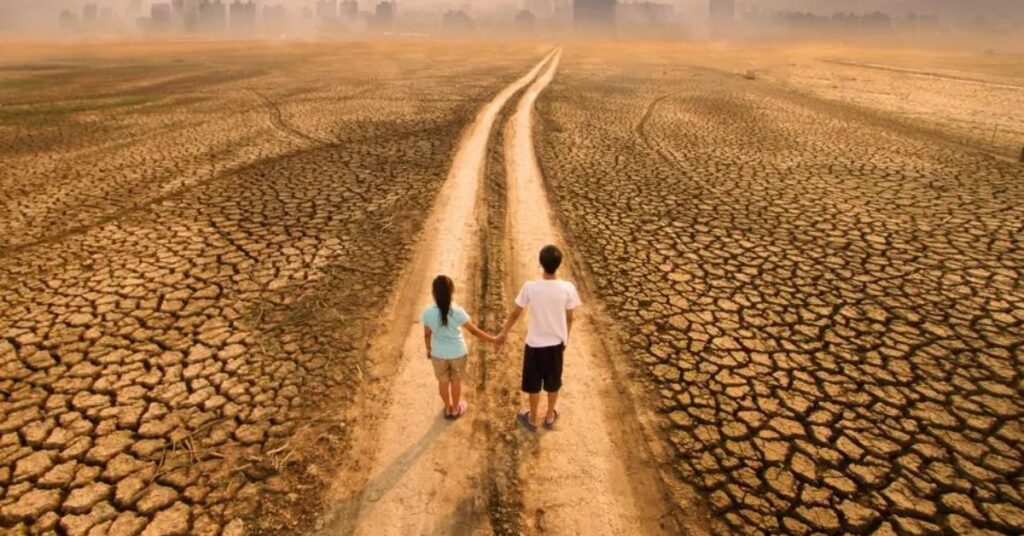The Urgency of
It is no longer a problem of the future. It is here. Immediate action is required. This can no longer be overlooked: increased global temperatures and repeated extreme weather phenomena as well as melting glaciers. Public awareness of climate change has developed in the United States, but that has not been converted into meaningful action.
This is all about understanding ground realities in change but most importantly how to take steps with the least chances of going back. Young people can play a role in addressing this by bringing voices from outside every community into conversations with their peers. They are leading this debate about environmental justice and what it has to do with policies. The awareness of young people is much closer to the ground where the issues of ‘toxic waste dumping‘ in their communities are felt more profoundly. The awareness is majorly brought into the mitigation and adaptation features of USA programs and policy. In that way, it will at least reduce GHG emissions while favoring a just transition. No one will be left behind.
Green Economy: Engaging Youth in Climate Action
Where youth can be, their voice will play an impactful role for transformative change. For the time being, countries have youth-run movements among them Fridays for Future and Sunrise Movement which have raised the lightning conversation on how the climate must be tended to. But other requirements usually hold them back from fully enjoying or making use of the promising green economy.
Education in future needs to prepare learners with skills for low-carbon energy transition. Value chain concepts and climate vulnerability factors should then be part of the school curricula that can prepare students for their future careers in sustainable energy systems. And their involvement in decision-making serves to translate into these policies the aspirations of future generations inheriting the planet.
you may also read this blog: The Solar Revolution: Transforming Energy, Saving Money
Global Impacts of Climate Change on Children

Children have been the most vulnerable in the effects of climate change. According to UNICEF, over 150 million children are not registered at birth and remain invisible in climate action plans. In turn, it becomes difficult to protect these children in terms of threats due to climate change.-Statement from UNICEF Executive Director Catherine Russell upon the End of COP29.At COP29, Catherine Russell emphasized the need to include children in national climate policies. Tajikistan’s commitment to integrating youth into climate decisions demonstrates how procedural justice can empower younger generations and secure intergenerational equity.
How Climate Change Is Affecting a Nation of Children
Children face unique challenges due to climate disruptions. From increased malnutrition to displacement caused by rising sea levels, they endure risks often overlooked in global strategies. Addressing these requires a whole systems approach that prioritizes their well-being.
Goal 13 – Urgent Actions
Goal 13: Taking Urgent Action to Combat Climate Change and Its Effects
Goal 13 sets standards for robust actions against climate change. One needs to implement trade-offs under the Paris Agreement and address energy inequality. For the USA, assuming leadership will create a precedent for global cooperation.
Are We Investing Enough to Combat Climate Change?
Investment in renewable energy and climate adaptation remains inconsistent. While strides have been made, challenges persist in transitioning from high-carbon industries to sustainable energy systems. Comparing global investments highlights the need for urgent financial commitments.
How Are Climate Change and the Paris Agreement Linked With the Sustainable Development Goals?
The Paris Agreement strengthens the framework for achieving Goal 13 by encouraging collaborative approaches to reduce emissions. Linking these efforts with broader SDGs ensures comprehensive action, benefitting both the environment and vulnerable populations.
Raising Awareness for a Safer Future

The Importance of Climate Change Awareness to Protect and Save Lives
Awareness campaigns are crucial for saving lives in climate emergencies. Educating communities about disaster preparedness, climate justice, and environmental policies can reduce risks and build resilience.
How Raising Awareness Protects Lives
Raising awareness empowers individuals and communities to act. For instance, informing coastal residents about flood risks can save lives during hurricanes. Real-world examples illustrate the life-saving potential of informed action.
Addressing Global Warming Is the Best Path to a Safer Future
Tackling global warming through climate mitigation and adaptation creates a safer world for all. By prioritizing clean energy and fair policies, the USA can address embodied energy injustices and lead a global transition to sustainability
The Impact of Climate Change on Women: Stories From Bangladesh
The burden of climate change is felt the most by women in Bangladesh-from loss of livelihoods to health problems resulting from environmental degradation. These stories illustrate the situation and create awareness for the need for recognition, justice and equitable climate solutions.
| Category | Key Impact | Proposed Solution |
| Vulnerable Populations | Displacement due to sea levels | Community relocation plans |
| High-Carbon Industries | Economic losses and emissions | Incentivize renewables |
| Youth Empowerment | Limited participation in policies | Inclusive decision-making |
Conclusion
Social Media Is the Main Source of Information for Young People in Climate Change
Social media platforms like Instagram and TikTok have become the primary sources for climate news among the youth. They offer quick access to information but are also prone to misinformation. The challenge lies in ensuring credible content reaches the audience, encouraging informed activism.
Young People Are Unsure About ‘Quick’ Technological Fixes for the Climate Crisis
Many young people view solutions like geoengineering and carbon capture with skepticism. They argue that such fixes often benefit high-carbon industries and distract from sustainable approaches. A balanced focus on policy-led climate reform and systemic changes is essential for building trust.
FAQ’s
What does Climate Change Awareness Juxtaposition mean?
Climate Change Awareness advocates now that humans must understand causes, impacts, and solutions to climate change and act to lessen its effects.
Why is Climate Change Awareness necessary?
Awareness should motivate individuals and communities, as well as governments, to take informed action to combat climate change and environmentally sustainable.
How could Climate Change Awareness be diffused?
By education in the media, by community engagement, and even advocacy in policies, public knowledge about climate change may be increased.
What are paramount issues in Climate Change Awareness?
Critical issues thus address understanding in science, its environment and societal impacts as well as urgency in reduced greenhouse-gases emissions.
Who can advocate for Climate Change Awareness?
Governments, educational institutions, non-governmental organizations, businesses, and individuals will all work in spreading awareness and action for climate change.







